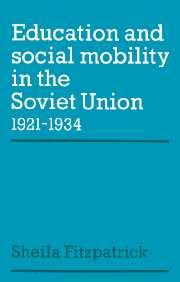8 - Mass education and mobility in the countryside
Published online by Cambridge University Press: 11 November 2009
Summary
At the beginning of 1928, when the Soviet leadership endorsed coercive measures to extract hoarded grain from the peasantry, the regime and the peasantry entered a period of confrontation which was officially described as ‘class war. The decision to collectivize individual peasant holdings, taken towards the end of 1929, substantially increased hostility and the incidence of violence on both sides. Prosperous peasants, as well as those active in opposing grain procurements and collectivization, were labelled kulaks and class enemies. They were punished by measures ranging from punitive taxation and expulsion of children from school to physical deportation, and retaliated by arson and attacks on Soviet officials. But the regime's attempts to divide the peasantry on class lines were unsuccessful. The peasantry as a whole expressed its hostility to the new policies in the wholesale slaughter of livestock. Collectivization was widely regarded by the peasants as a second serfdom. Sometimes, harking back to an older tradition of grievance against state authority, they associated its perpetrators with Antichrist.
Yet for very large numbers of peasants the end result was not ‘enserfment’ in the kolkhoz but departure from the countryside. Some simply fled to the towns; others were taken into the industrial labour force by orgnabor (organized recruitment); and a substantial group entered the labour force after being deported from the villages as kulaks.
- Type
- Chapter
- Information
- Education and Social Mobility in the Soviet Union 1921–1934 , pp. 158 - 180Publisher: Cambridge University PressPrint publication year: 1979



